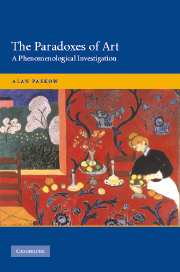Introduction
Published online by Cambridge University Press: 27 March 2010
Summary
QUESTIONS
What is a painting? I am not posing a question of definition. Rather, I am interested in discovering what a painting means to us, why it can matter in our lives. Nor am I assuming that a particular painting has a meaning awaiting our discovery, for I know well that different people have different responses regarding the significance of the same painting and that people sometimes bring special agendas to an artwork, perhaps unconcerned with what “it means.” Still, most of us do seek some sort of meaning or significance in viewing a painting; ordinarily, we do not simply stare at its colors or shapes and ask no more of it. No, I claim that we wish to feel its presence, to discover what it has to say to us and often what it has to say to other people as well. In short, we desire to make at least some sense of it.
Now if I am right that when contemplating a painting we normally care about its meaning, why do we engage in this activity? After all, a painting is, from one point of view, simply a created image, and what is so special about that? If one is inclined to reply that some images are “well executed” or “pleasing to the eye” or “beautiful,” this is certainly true, but the same can be said of many things, such as a superbly designed woodstove or an automobile fuel injector.
- Type
- Chapter
- Information
- The Paradoxes of ArtA Phenomenological Investigation, pp. 1 - 39Publisher: Cambridge University PressPrint publication year: 2004



